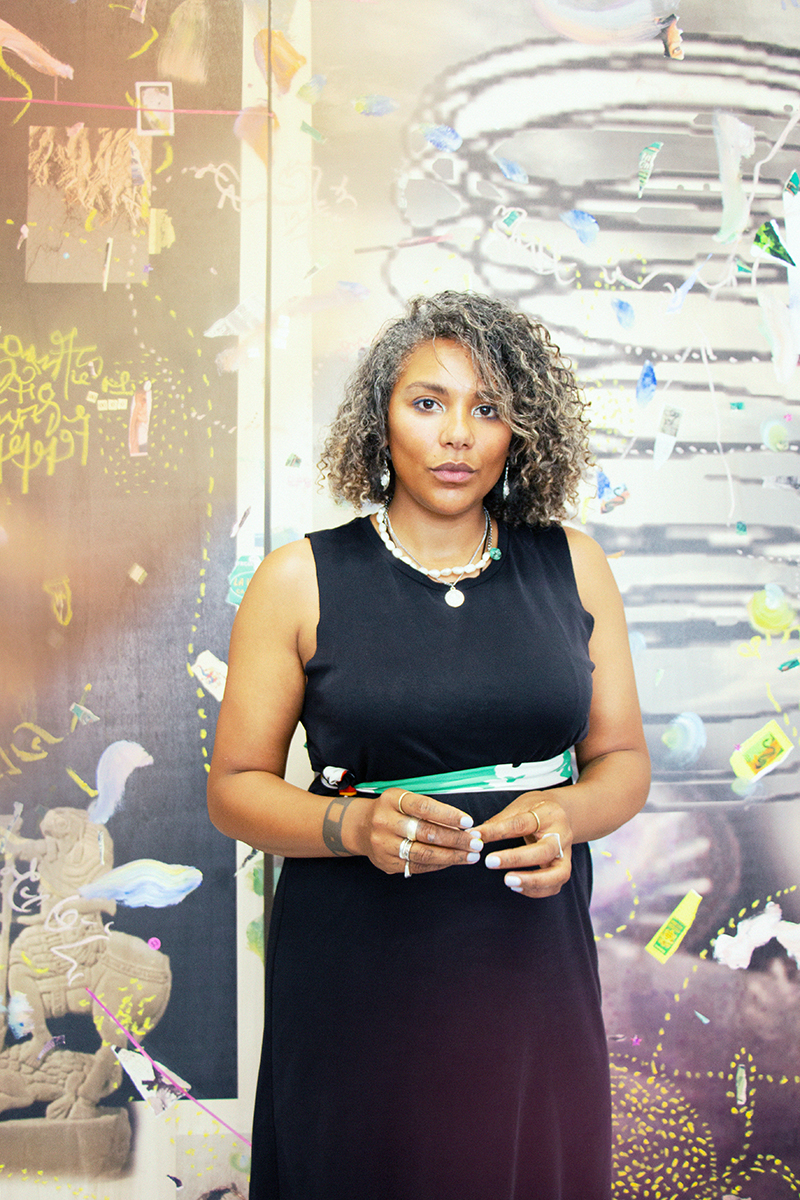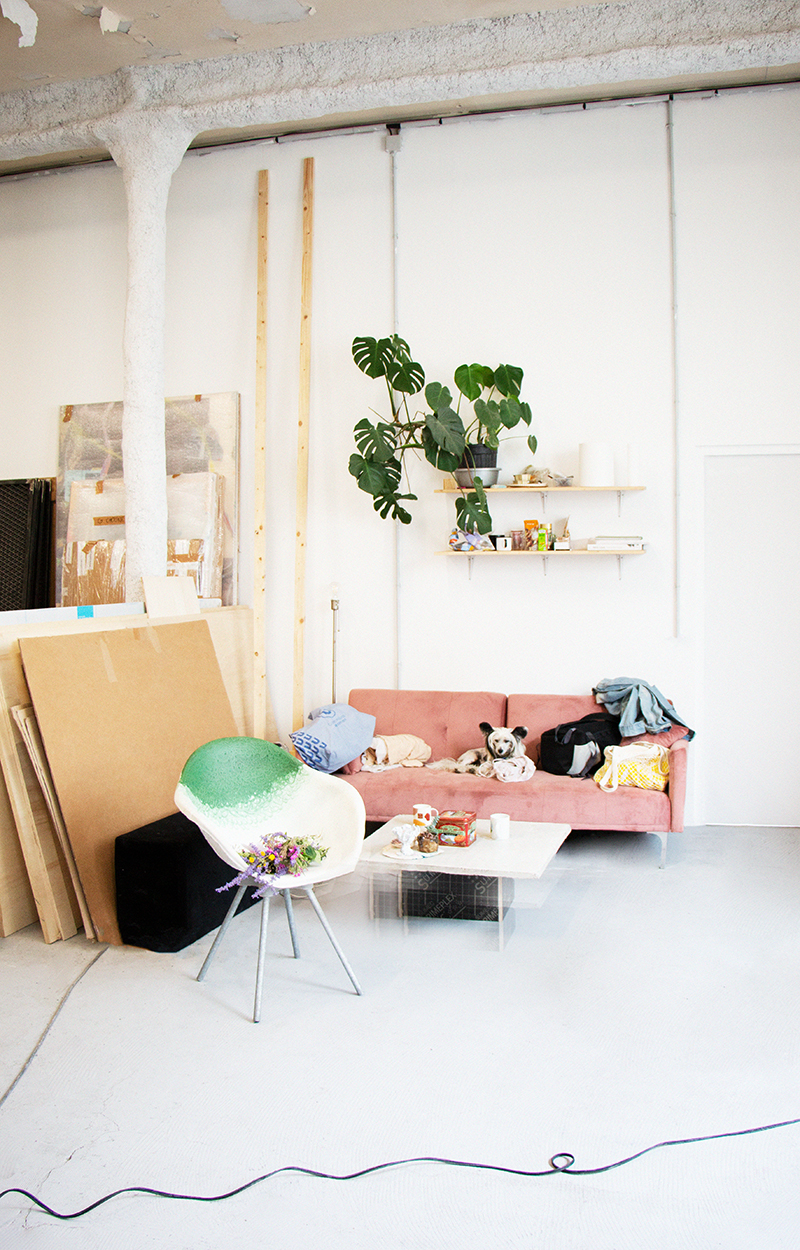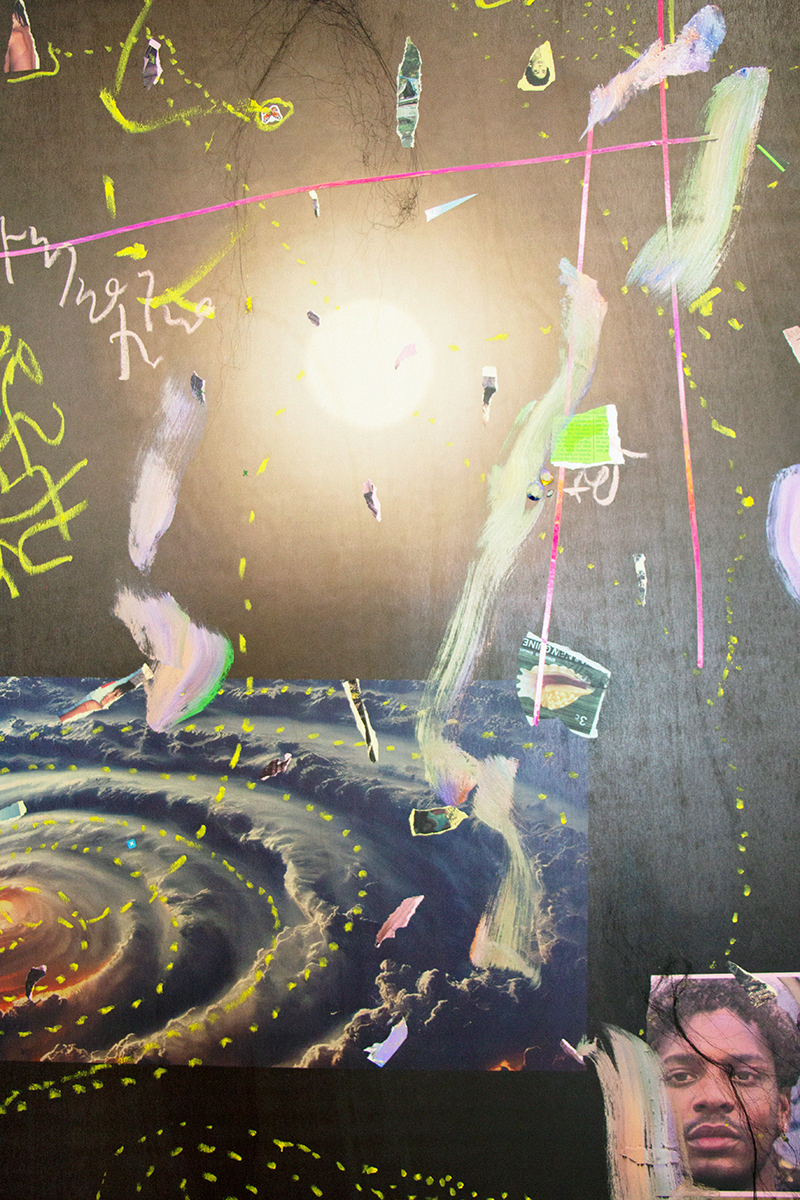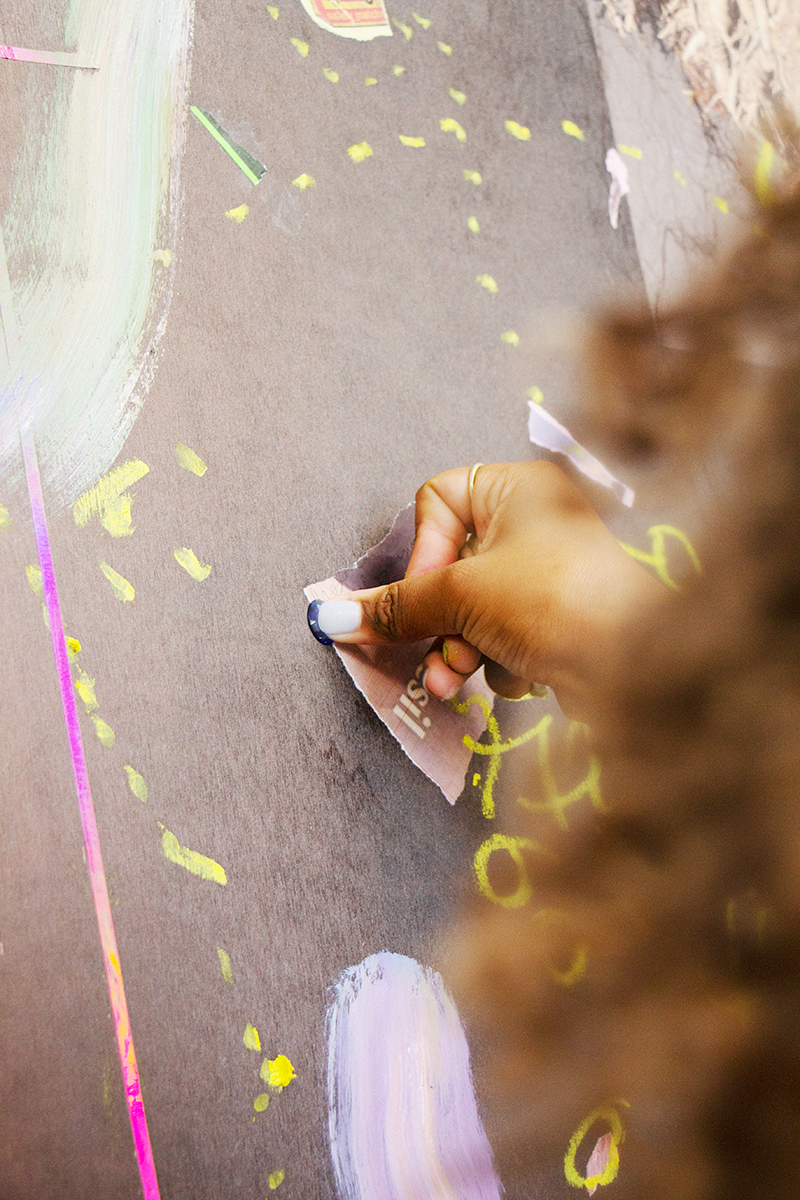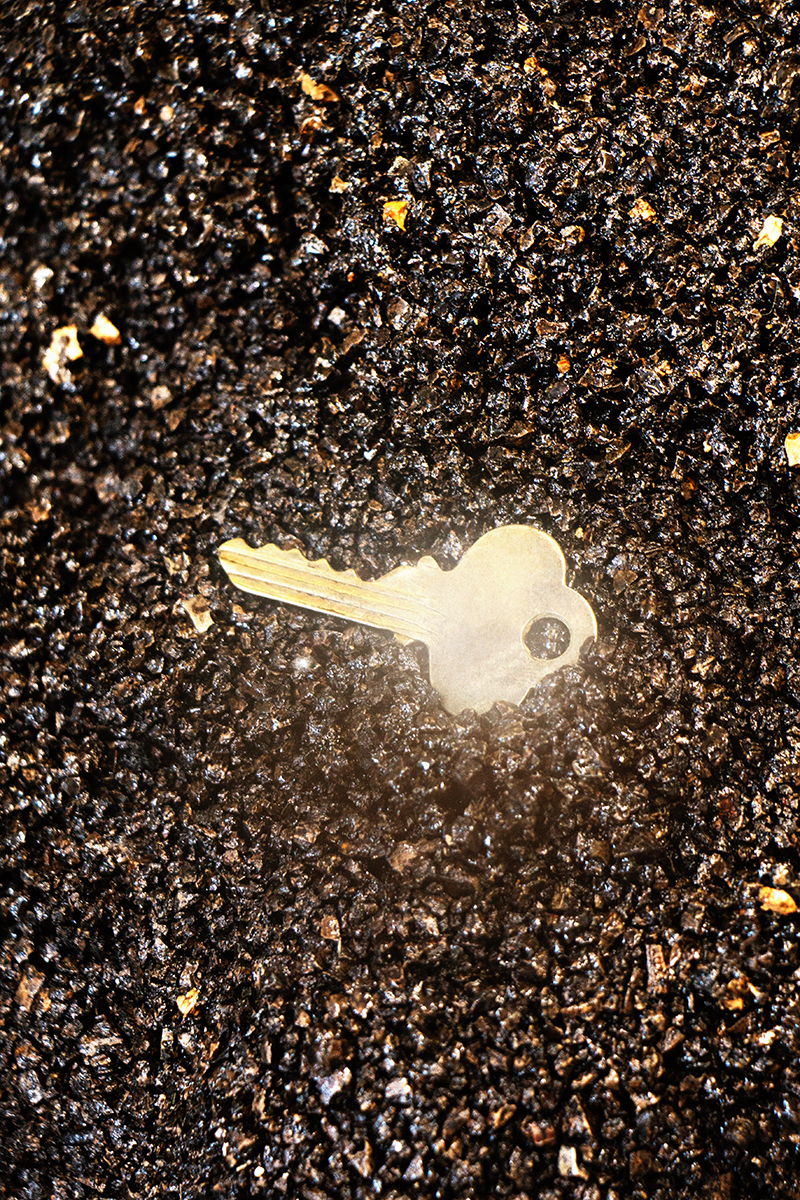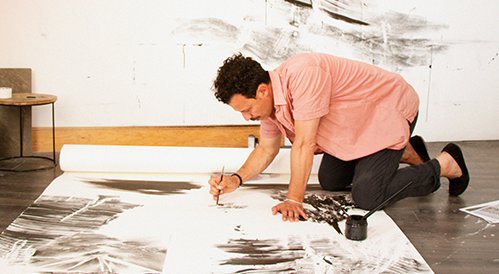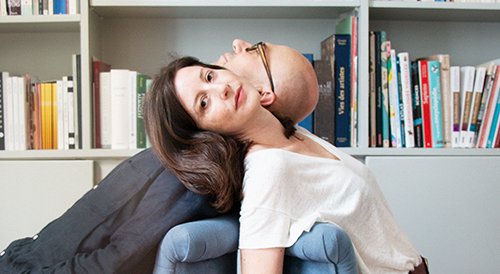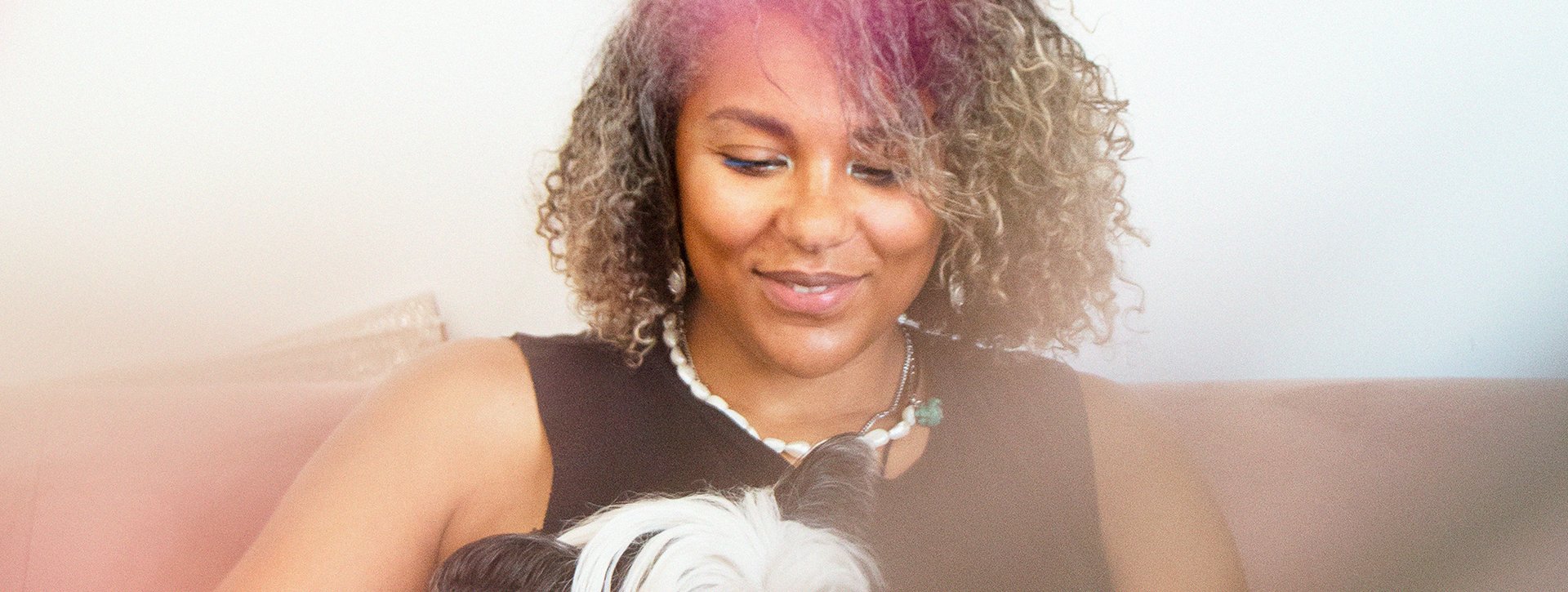
The Mystique of Gaëlle Choisne
We met Gaëlle Choisne and her dog Satché in Aubervilliers, in east Paris. Based for the past two years in Poush, an artists’ residence built in a former 1920s industrial perfumery, Gaëlle Choisne was adding the final touches to the works she will be presenting this autumn as part of the “Prix Marcel Duchamp 2024 – Nominees” exhibition - alongside Abdelkader Benchamma, Noémie Goudal and Brazilian duo Angela Detanico & Rafael Lain.
In collaboration with Art Basel Paris
Her studio, lit by large bay windows, is stacked with piles of salvaged materials, imposing wooden crates and intriguing painted clay sculptures. Outside, a storm is brewing. In contrast to her spirited dog, Gaëlle Choisne emanates a radiant calm: “taking part in the Prix Marcel Duchamp is indeed an honour, and an important moment in an artist’s career. I’m thrilled to have a large space within the exhibition, because that creates something fairly immersive, which goes well with my art.” Among the artists nominated in previous years, whose work she particularly admires, she cites Julien Prévieux (winner in 2014), Isabelle Cornaro (nominee in 2021), Mimosa Echard (winner in 2023) and Mohamed Bourouissa (nominee in 2018). Gaëlle Choisne claims a range of influences, from American sculptor Sarah Zse to Canadian photographer Lynne Cohen (whom she had the good fortune to meet before her death in 2014, editor’s note) and American artist and dancer Nick Cave.
Gaëlle Choisne claims a range of influences, from American sculptor Sarah Zse to Canadian photographer Lynne Cohen and American artist and dancer Nick Cave.
For her first solo exhibition at the Centre Pompidou (she has already exhibited in Montréal, Warsaw, Los Angeles, Havana and Istanbul), Gaëlle Choisne is proposing a temporal and sensorial journey in a recomposed space. On the floor: dyed, black concretions made of cork, like a volcanic beach; on the walls: large painted panels adorned with a collection of various found items; in the centre: hive-like structures, also made of cork, from which video sequences are projected. With this hybrid installation, which is “an island, an archipelago, a place where different realities accumulate to be reinvented and repaired”, the artist invites us to “change our perspective on the world and become an observer of our own species”.
Having studied at the Fine Arts Academy in Amsterdam and the Fine Arts School in Lyon, Gaëlle Choisne combines a sometimes very documentary practice that is close to her subjects, with a much more speculative approach aiming to open her discourse to different habitable and possible worlds. This oscillation between criticism and the power of the imaginary gives her the scope to reveal the full depth of the social and environmental dynamics that concern her. The artist is also the exponent of a very personal mysticism and has titled her installation for the Prix Marcel Duchamp L’Ère du Verseau (in astrology, this esoteric belief sees our era as a time of upheaval and radical change, editor’s note). Her large paintings on wooden panels, which she calls “scrap paintings” (in reference to scrapbooking, an activity that is a bit “trivial and poorly considered”, in her words), are replete with mysterious inscriptions, which she describes as “a form of galactic, talismanic writing”.
I connect with an energy, I channel messages from other worlds to create new temporal lines of healing and make our planet healthier.
Gaëlle Choisne
Profoundly influenced by the work of British author and critic Ekow Eshun and Pan-Africanist Nioussérê Kalala Omotunde, Gaëlle Choisne is also driven by a desire for reparation and healing: “I connect with an energy, I channel messages from other worlds to create new temporal lines of healing and make our planet healthier”. The artist also tries to “create a sort of transgenerational and fictional family”. She glues, assembles and superposes photos of black families that she often finds at flea markets or even created from scratch by AI. To these, she adds “rubbish” found in the street, such as dropped bits of paper or commercial stickers, but also locks of hair. “I often use fake hair, like the kind used in afro extensions. I like this trivial aspect, something that isn’t considered noble. And then, with hair, there’s the notion of roots…”.
As a black woman, I don’t believe I always have a space where I can feel secure, so I create my own spaces, my ‘safe spaces’.
Gaëlle Choisne
Breton through her mother and Haitian through her father, Gaëlle Choisne is marked by these two cultures that are “complete opposites in the way they perceive the world – one through intuition and the invisible, and the other through mathematical and physical rationalisation”, she explains. “Instead of fighting them, I embraced these contradictions. It took me a long time to understand that there was no need to choose”. As the storm finally breaks outside and torrential rain beats down on the city, she adds: “I play with colonial and decolonial history, I represent black bodies, the bodies of trans or non-binary people. As a black woman, I don’t believe I always have a space where I can feel secure, so I create my own spaces, my ‘safe spaces’”. Recount and repair, always. ◼
Related articles
In the calendar
Portrait de Gaëlle Choisne © Aude Carleton
